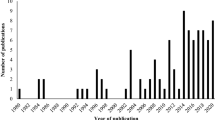Abstract
The major surveillance camera manufacturers have begun incorporating wireless networking functionality into their products to enable wireless access. However, the video feeds from such cameras can only be accessed within the transmission range of the cameras. These cameras must be connected to backbone infrastructure in order to access them from more than one hop away. This network infrastructure is both time-consuming and expensive to install, making it impractical in many rapid deployment situations (e.g., to provide temporary surveillance at a crime scene). To overcome this problem, we propose the MeshVision system that incorporates wireless mesh network functionality directly into the cameras. Video streams can be pulled from any camera within a network of MeshVision cameras, irrespective of how many hops away that camera is. To manage the trade-off between video stream quality and the number of video streams that could be concurrently accessed over the network, MeshVision uses a bandwidth adaptation mechanism. This mechanism monitors the wireless network looking for drops in link quality or signs of congestion and adjusts the quality of existing video streams in order to reduce that congestion. A significant benefit of the approach is that it is of low cost, requiring only a software upgrade of the cameras.











Similar content being viewed by others
Notes
The Axis cameras support RTSP protocol and use RTP to deliver MPEG frames.
References
Akyildiz, I.F., Melodia, T., Chowdhury, K.R.: A survey on wireless multimedia sensor networks. Comput. Netw.: Int. J. Comput. Telecommun. Netw. 51(4), 921–960 (2007)
Akyildiz, I.F., Akan, O.B., Morabito, G.: A rate control scheme for adaptive real-time applications in ip networks with lossy links and long round trip times. IEEE/ACM Trans. Netw. 13(3), 554–567 (2005)
Akyildiz, I.F., Wang, X., Wang, W.: Wireless mesh networks: a survey. Comput. Netw. ISDN Syst. 47(4), 445–487 (2005)
Chen, G., Govindaswamy, P., Li, N., Wang, J.: Continuous camera-based monitoring for assistive environments. In: PETRA ’08: Proceedings of the 1st International Conference on PErvasive Technologies Related to Assistive Environments, vol. 282, pp. 1–8. Athens, Greece (2008)
Feng, W., Walpole, J., Feng, W., Pu, C.: Moving towards massively scalable video-based sensor networks. In: Proceedings of the Workshop on New Visions for Large-Scale Networks: Research and Applications, pp. 12–14 (2001)
Feng, W.-C., Kaiser, E., Feng, W.C., Baillif, M.L.: Panoptes: scalable low-power video sensor networking technologies. ACM Trans. Multimedia Comput. Commun. Appl. 1(2), 151–167 (2005)
Hu, P., Wishart, R., Ti, J., Portmann, M., Indulska, J.: Meshvision: an adaptive wireless mesh network video surveillance system. In: Proceedings of the 6th International Conference on Ubiquitous Intelligence and Computing (UIC 2009), vol. 5585 of Lecture Notes in Computer Science, pp. 193–207. Springer, Brisbane, Australia (July 2009)
Kulkarni, P., Ganesan, D., Shenoy, P., Lu, Q.: Senseye: a multi-tier camera sensor network. In: MULTIMEDIA ’05: Proceedings of the 13th Annual ACM International Conference on Multimedia, pp. 229–238. ACM, Singapore (2005)
Li, N., Yan, B., Chen, G.: Measurement study on wireless camera networks. In: Proceedings of the Second ACM/IEEE International Conference on Distributed Smart Cameras ICDSC 2008, pp. 1–10 (2008)
Licandro, F., Schembra, G.: Wireless mesh networks to support video surveillance: architecture, protocol, and implementation issues. EURASIP J. Wirel. Commun. Netw. 2007(1), 34 (2007)
Margi, C.B., Lu, X., Zhang, G., Stanek, G., Manduchi, R., Obraczka, K.: Meerkats: a power-aware, self-managing wireless camera network for wide area monitoring. In: Workshop on Distributed Smart Cameras (DSC 2006) held in conjunction with ACM SenSys. Boulder, CO, USA (October 2006)
McCahill, M., Norris, C.: Cctv in London. Working paper No.6 for UrbanEye—the 5th Framework Programme of the European Commission, p. 20 (2002)
Nordstrom, E.: University of uppsala open source implementation of AODV.
Perkins, C., Belding-Royer, E., Das, S.: Ad hoc on-demand distance vector (AODV) routing. RFC 3561 (2003)
Pirzada, A.A., Wishart, R., Portmann, M., Indulska, J.: A wireless mesh network routing protocol for incident area networks. J. Pervasive Mobile Comput., Special Issue on Global Security, Elsevier (2009)
Zhu, X., Agrawal, P., Pal Singh, J., Alpcan, T., Girod, B.: Rate allocation for multi-user video streaming over heterogenous access networks. In: MULTIMEDIA ’07: Proceedings of the 15th International Conference on Multimedia, pp. 37–46. ACM, Augsburg, Germany (2007)
Acknowledgments
NICTA is funded by the Australian Government as represented by the Department of Broadband, Communications and the Digital Economy and the Australian Research Council through the ICT Centre of Excellence program; and the Queensland Government.
Author information
Authors and Affiliations
Corresponding author
Rights and permissions
About this article
Cite this article
Hu, P., Tan, W.L., Wishart, R. et al. MeshVision: an adaptive wireless mesh network video surveillance system. Multimedia Systems 16, 243–254 (2010). https://doi.org/10.1007/s00530-010-0191-z
Published:
Issue Date:
DOI: https://doi.org/10.1007/s00530-010-0191-z




